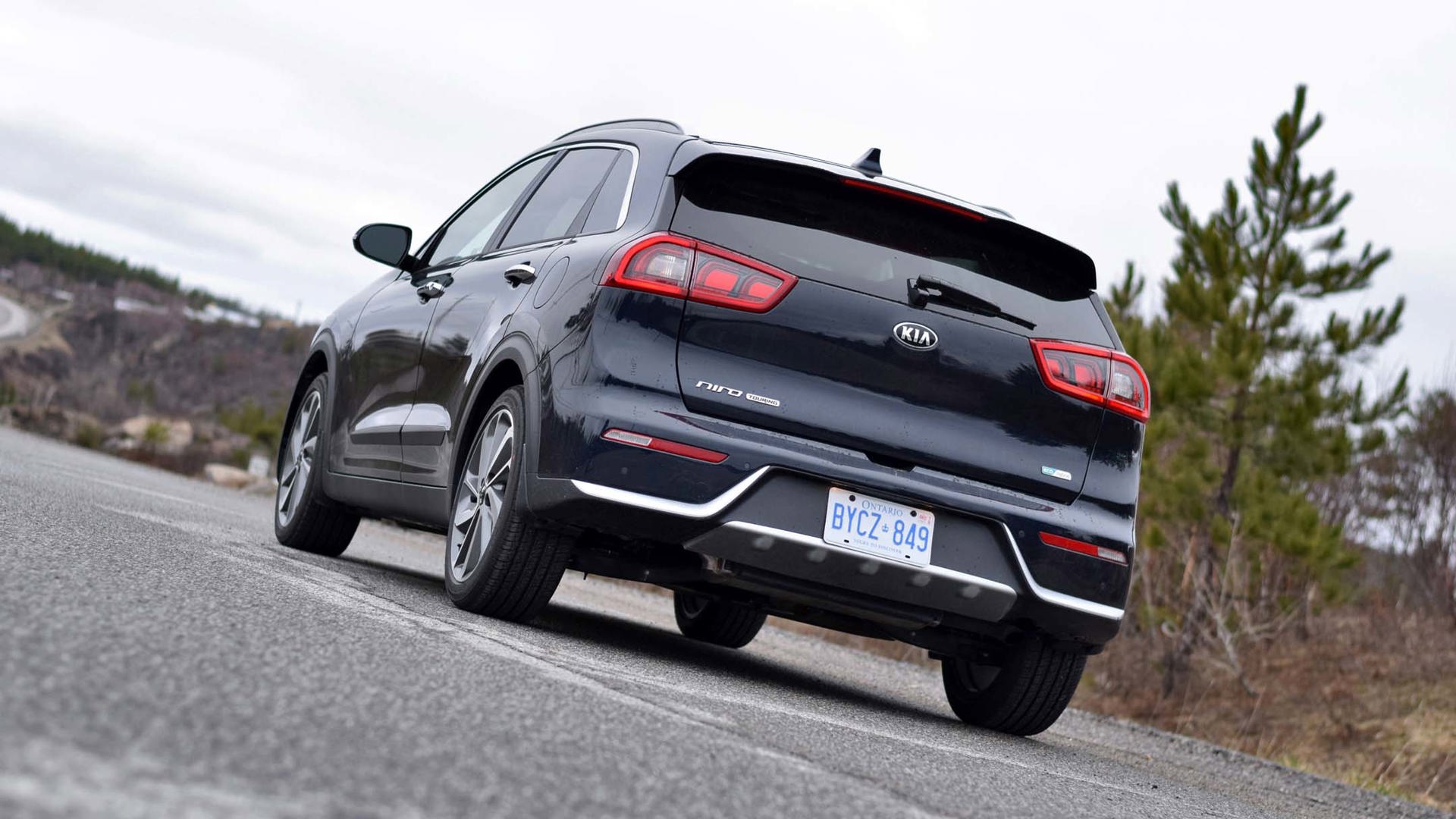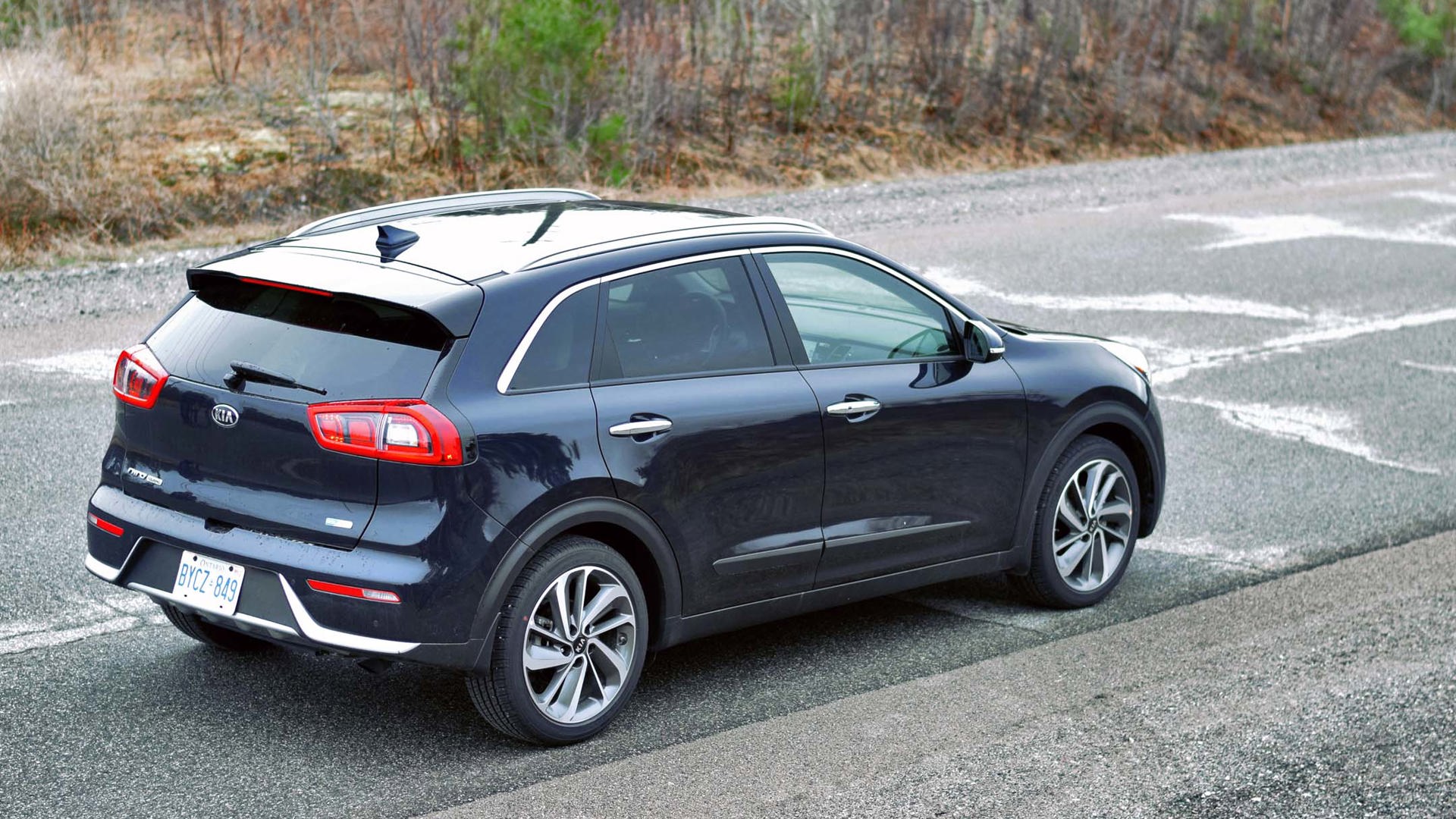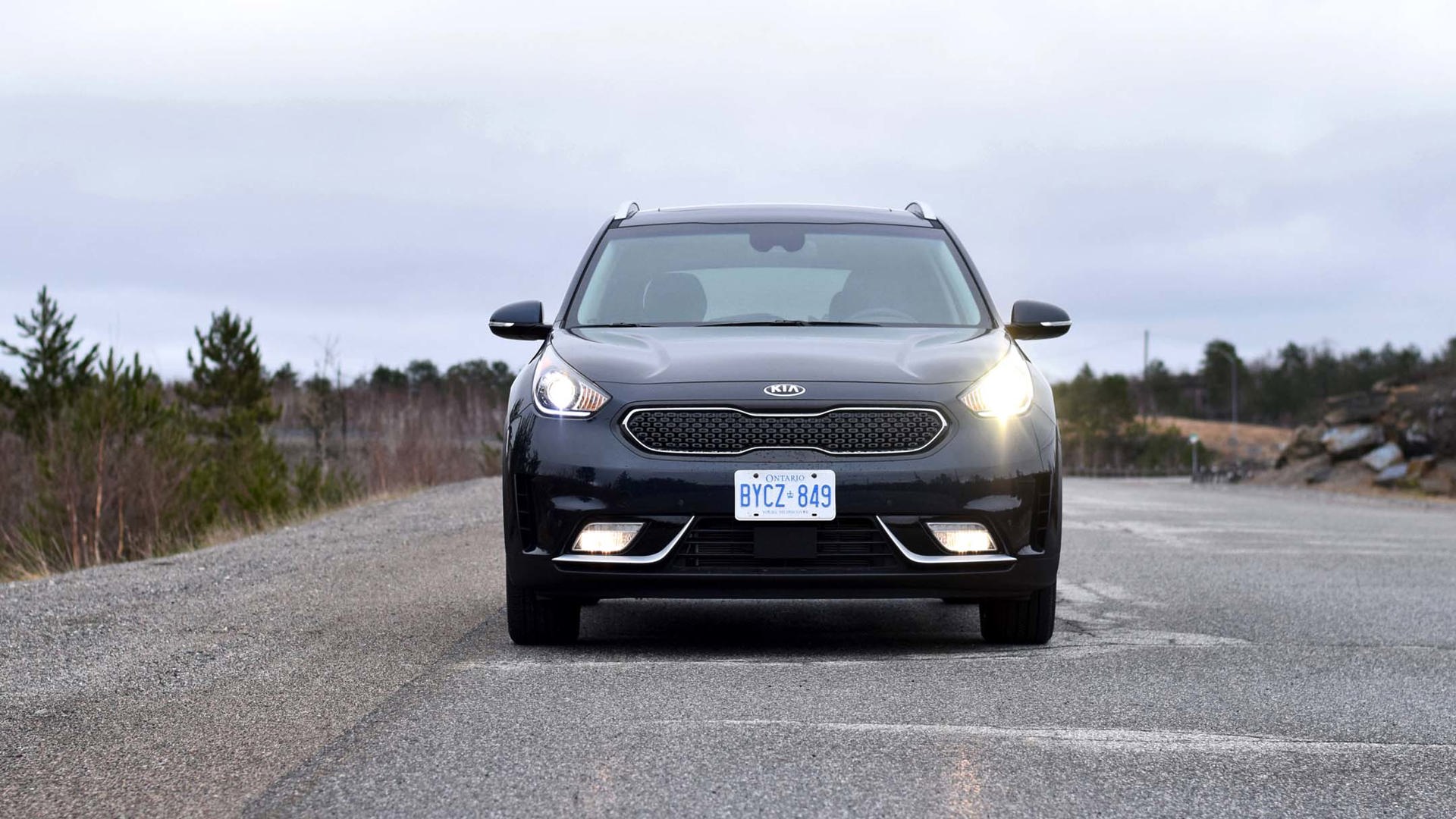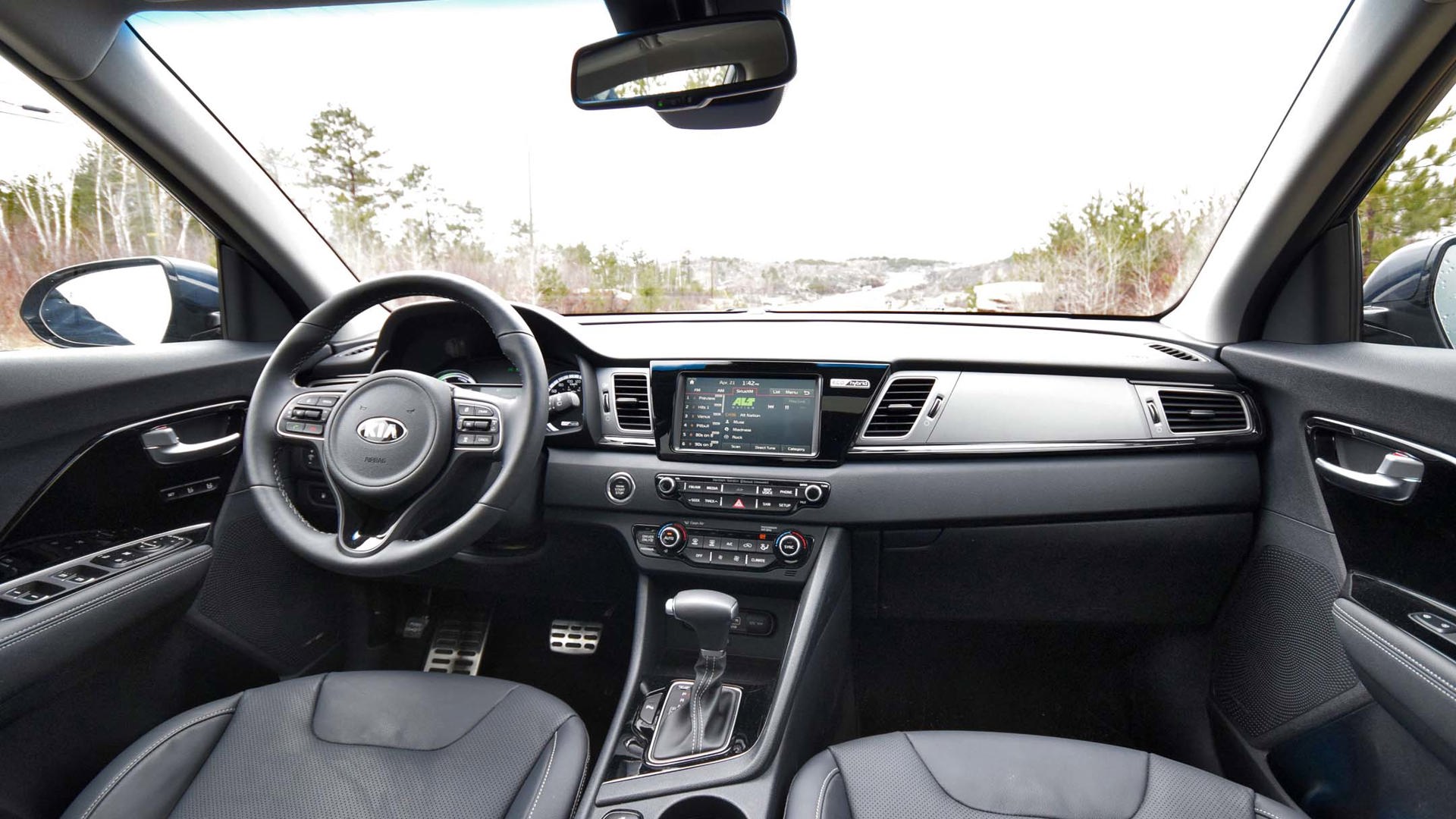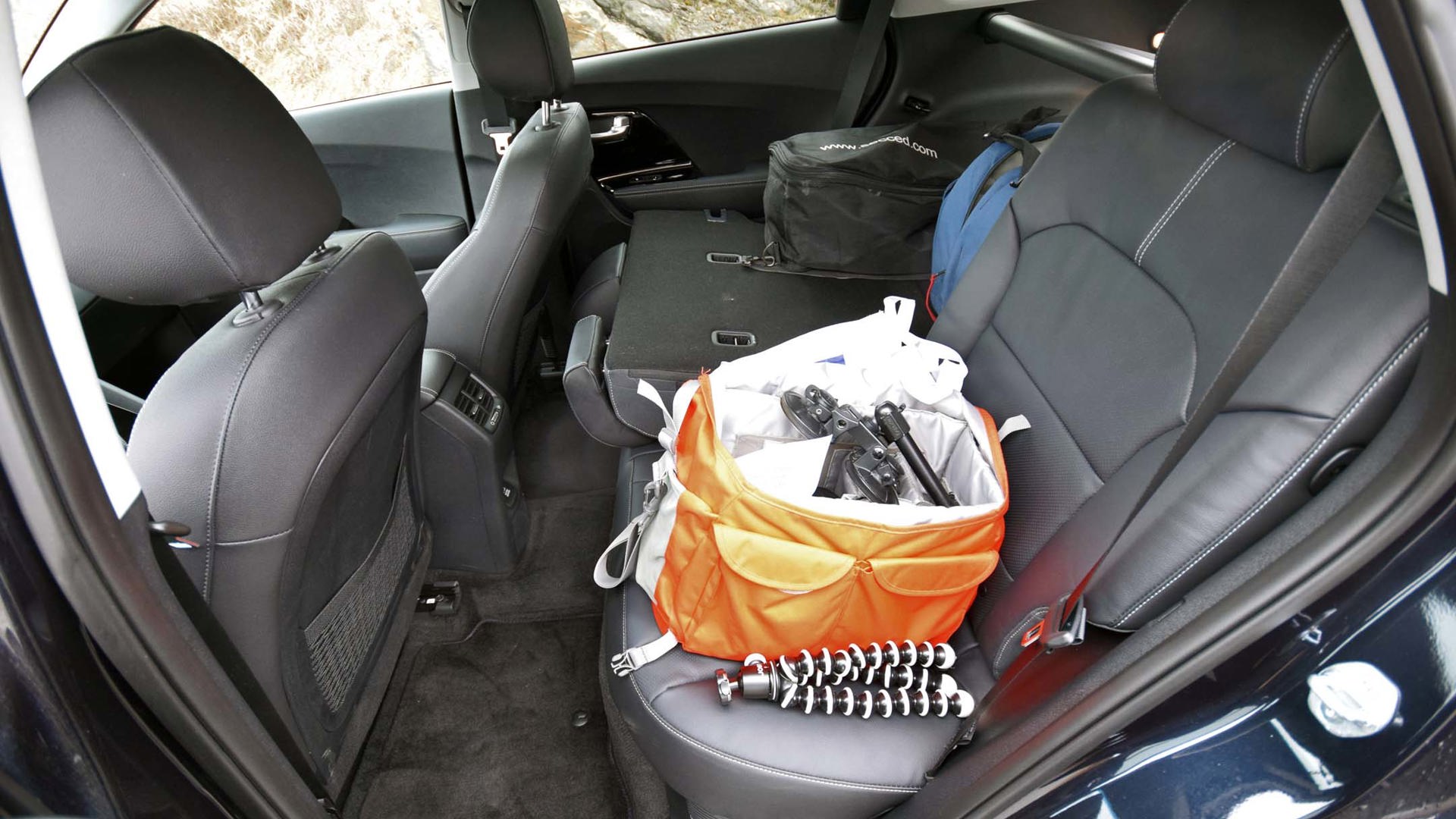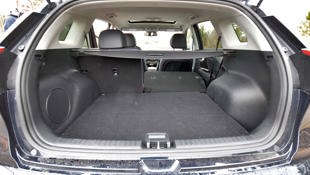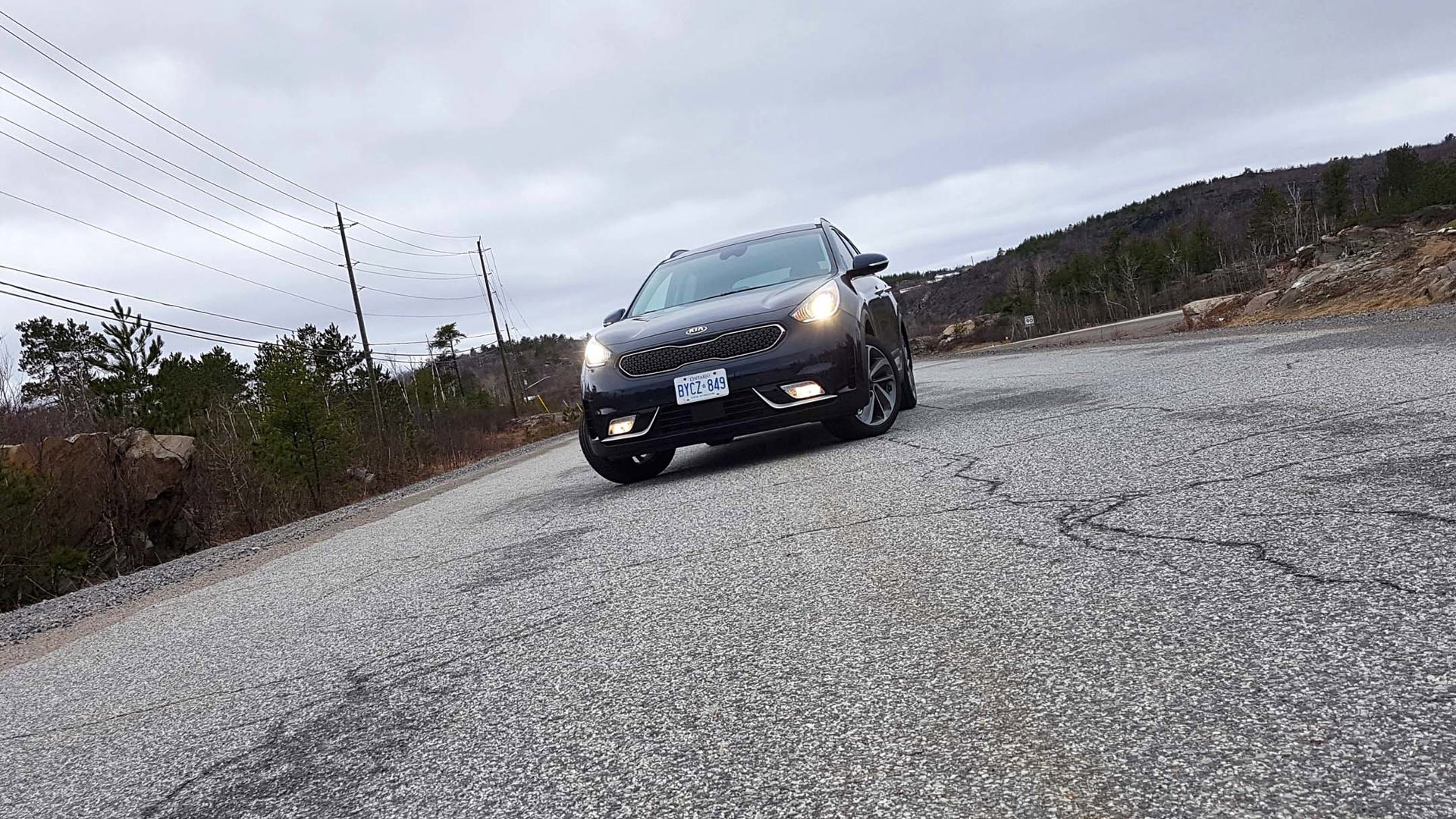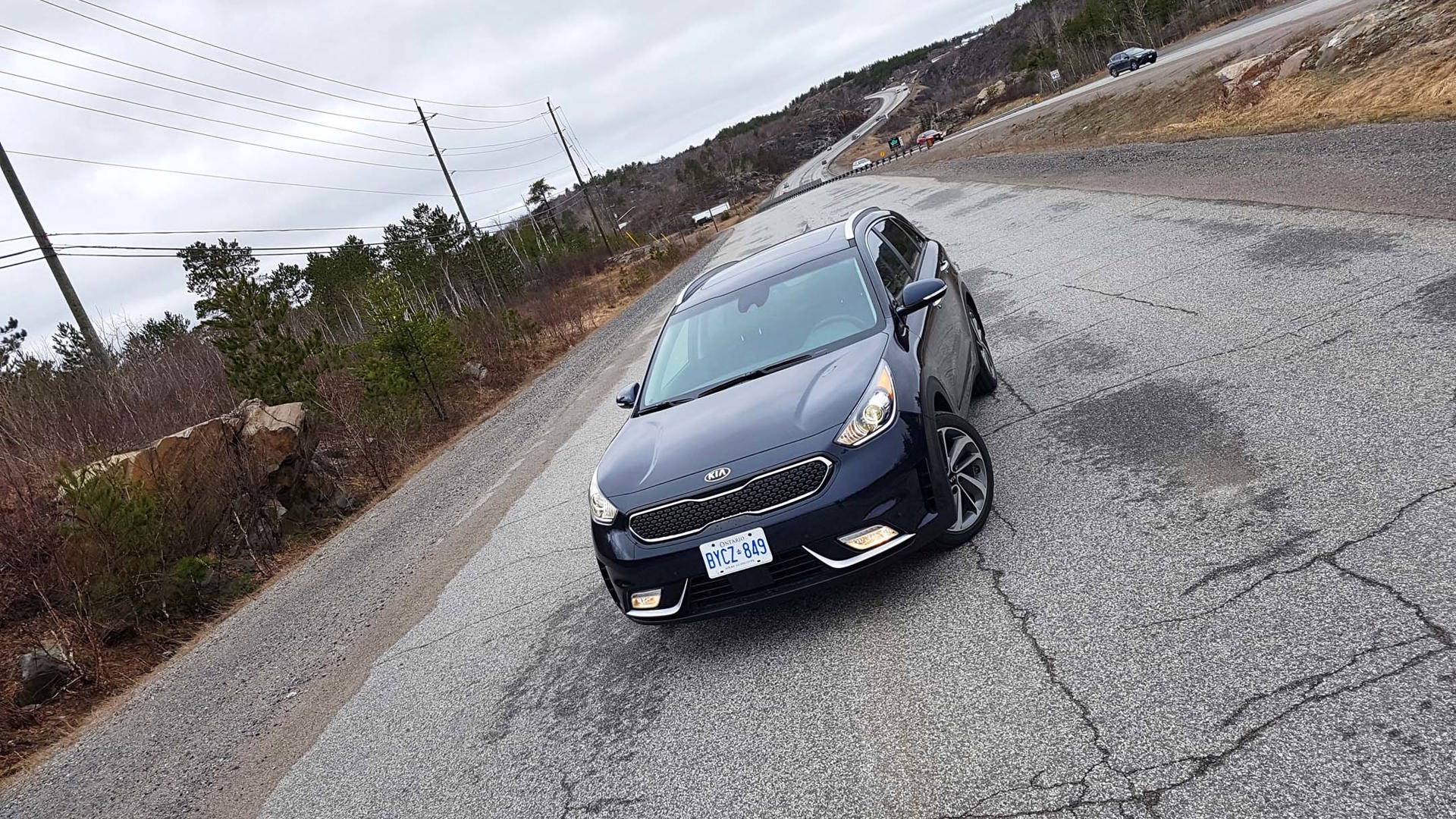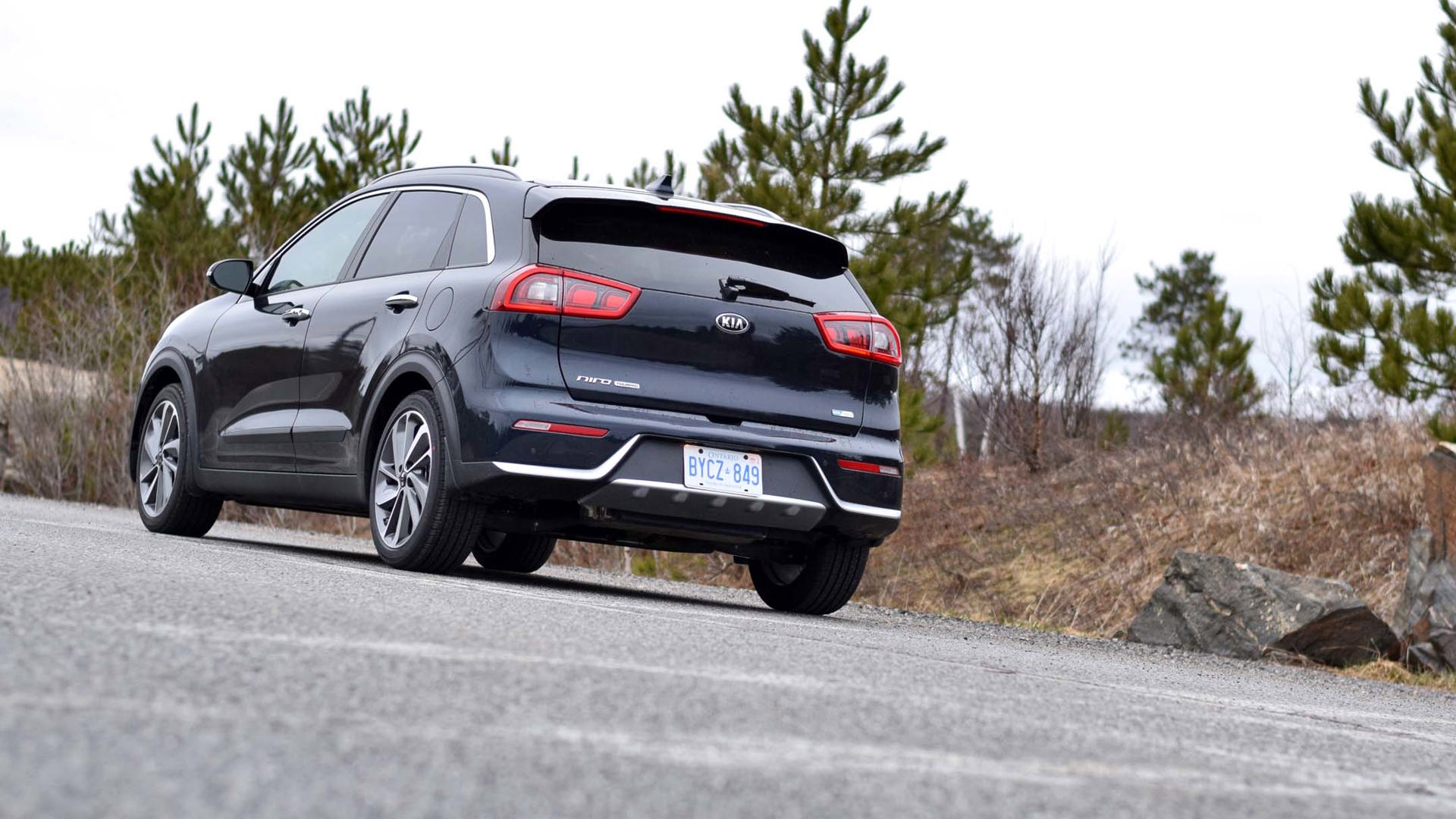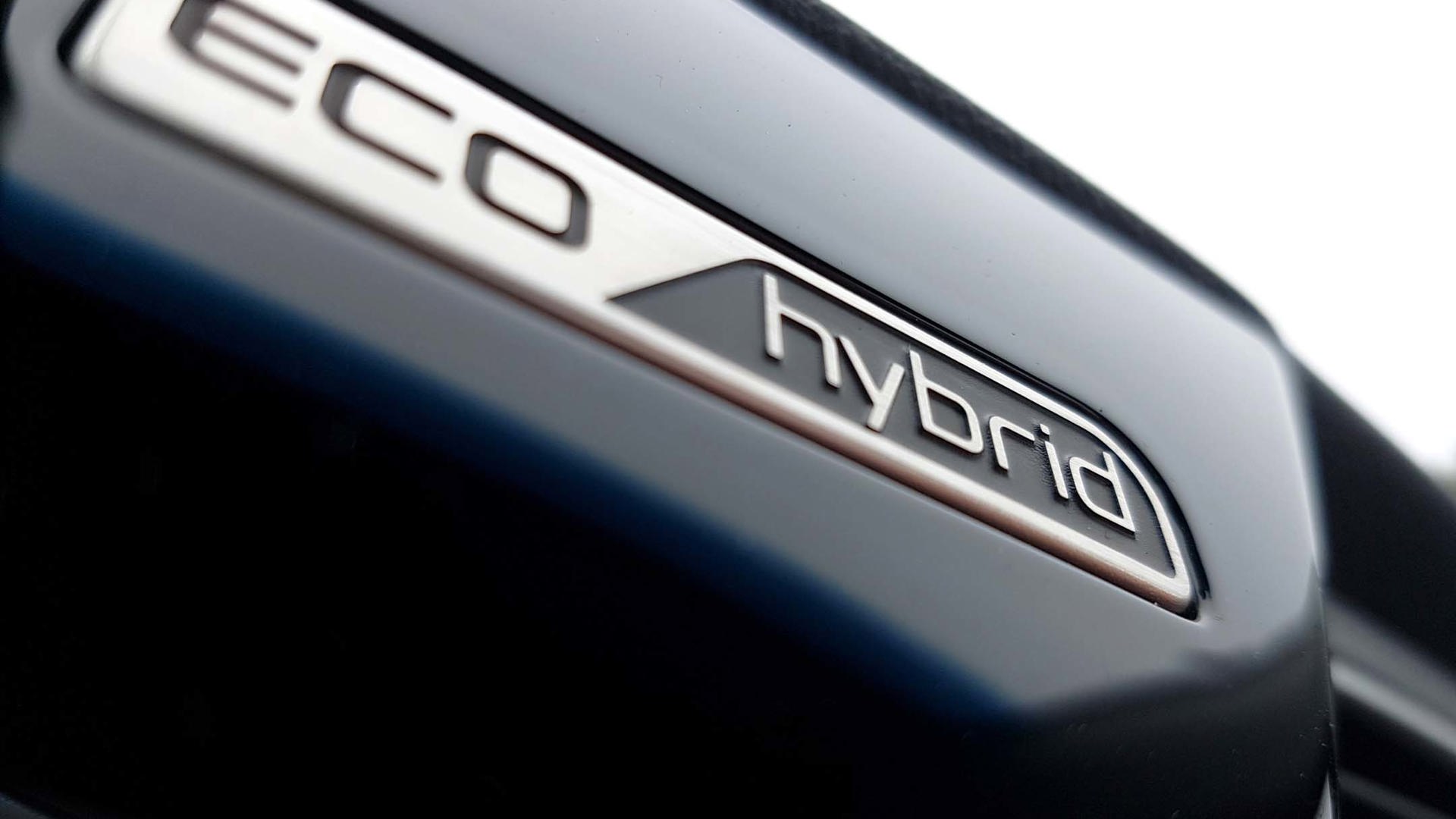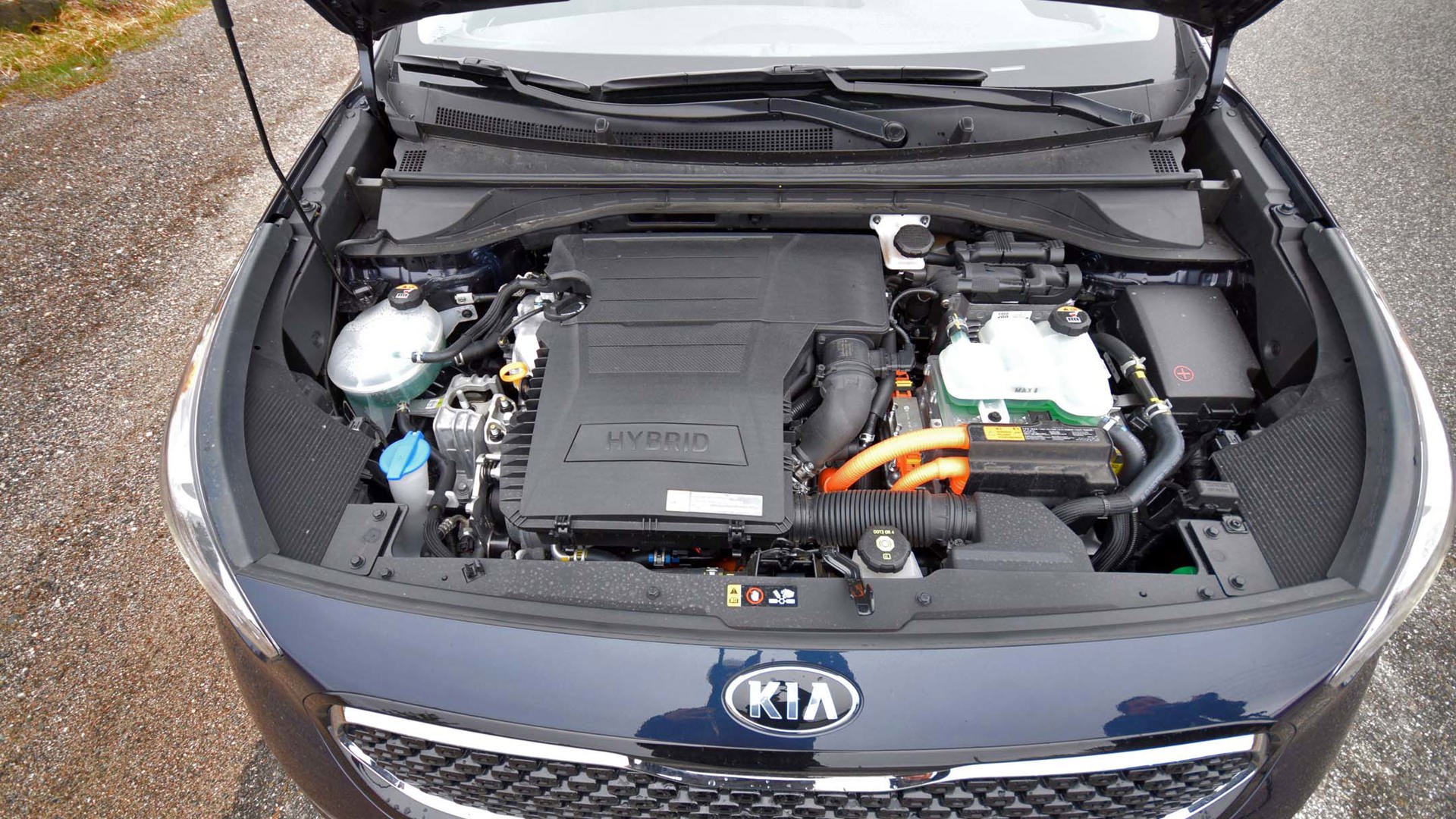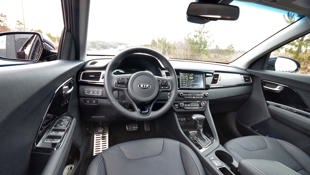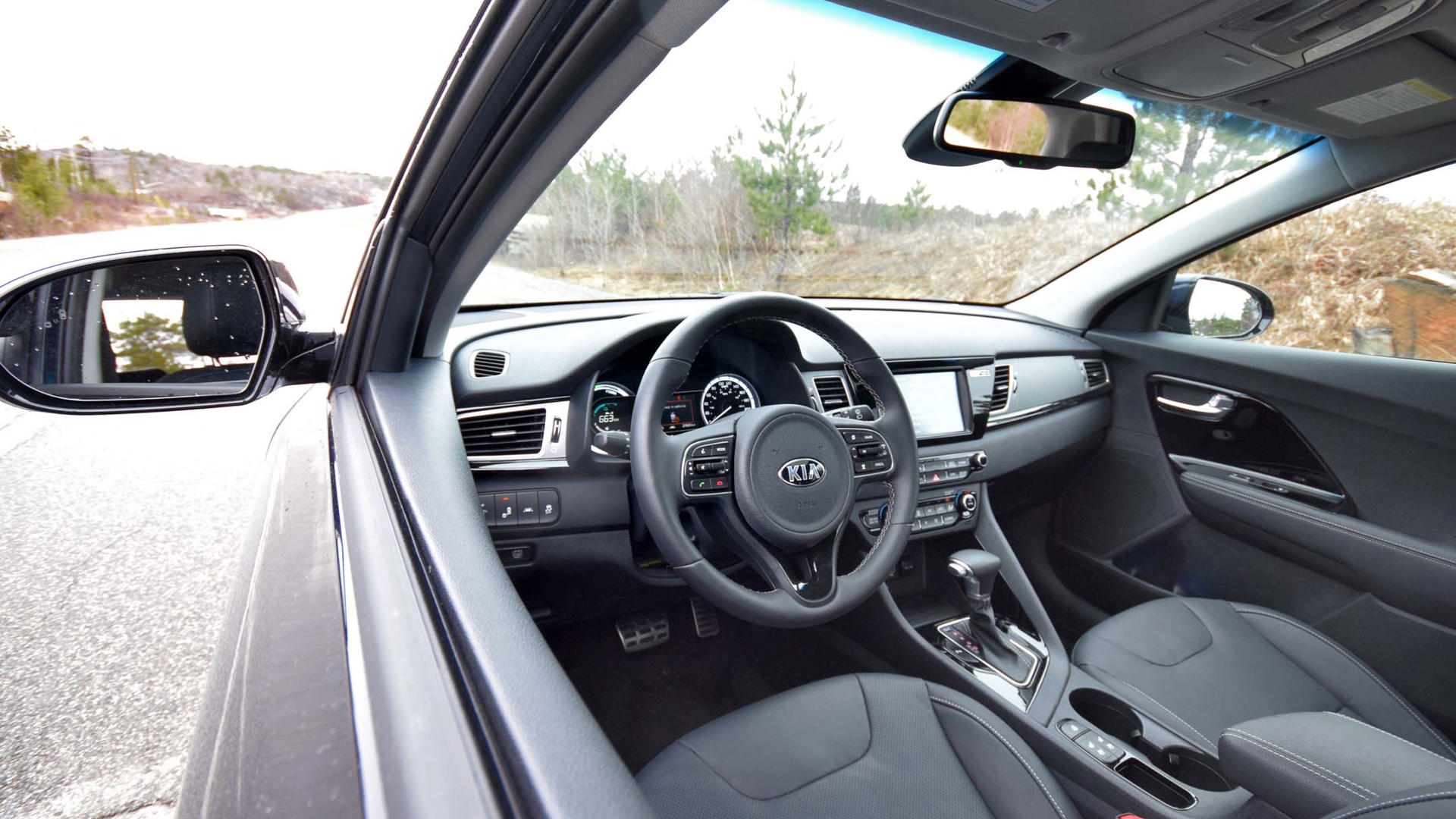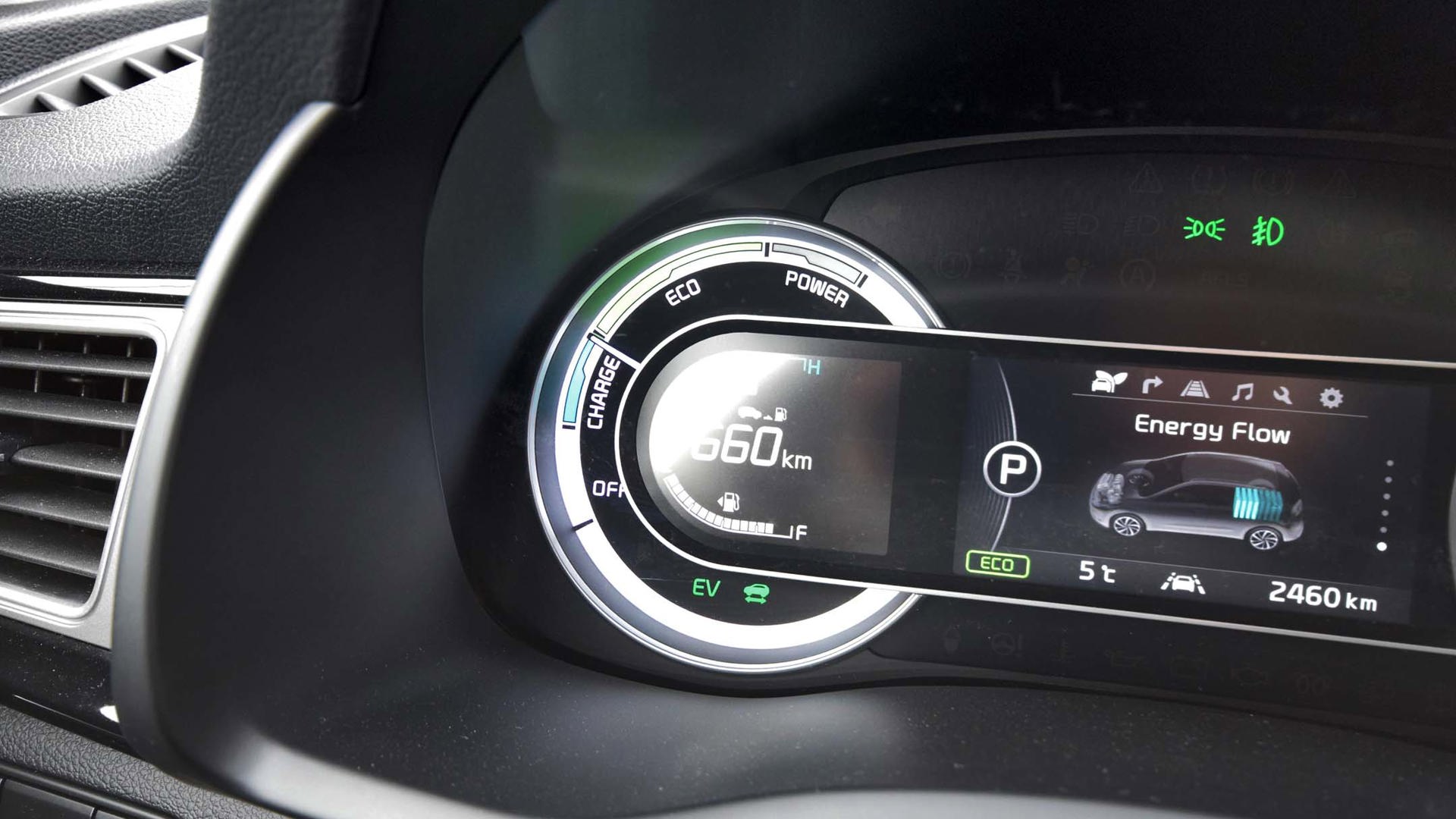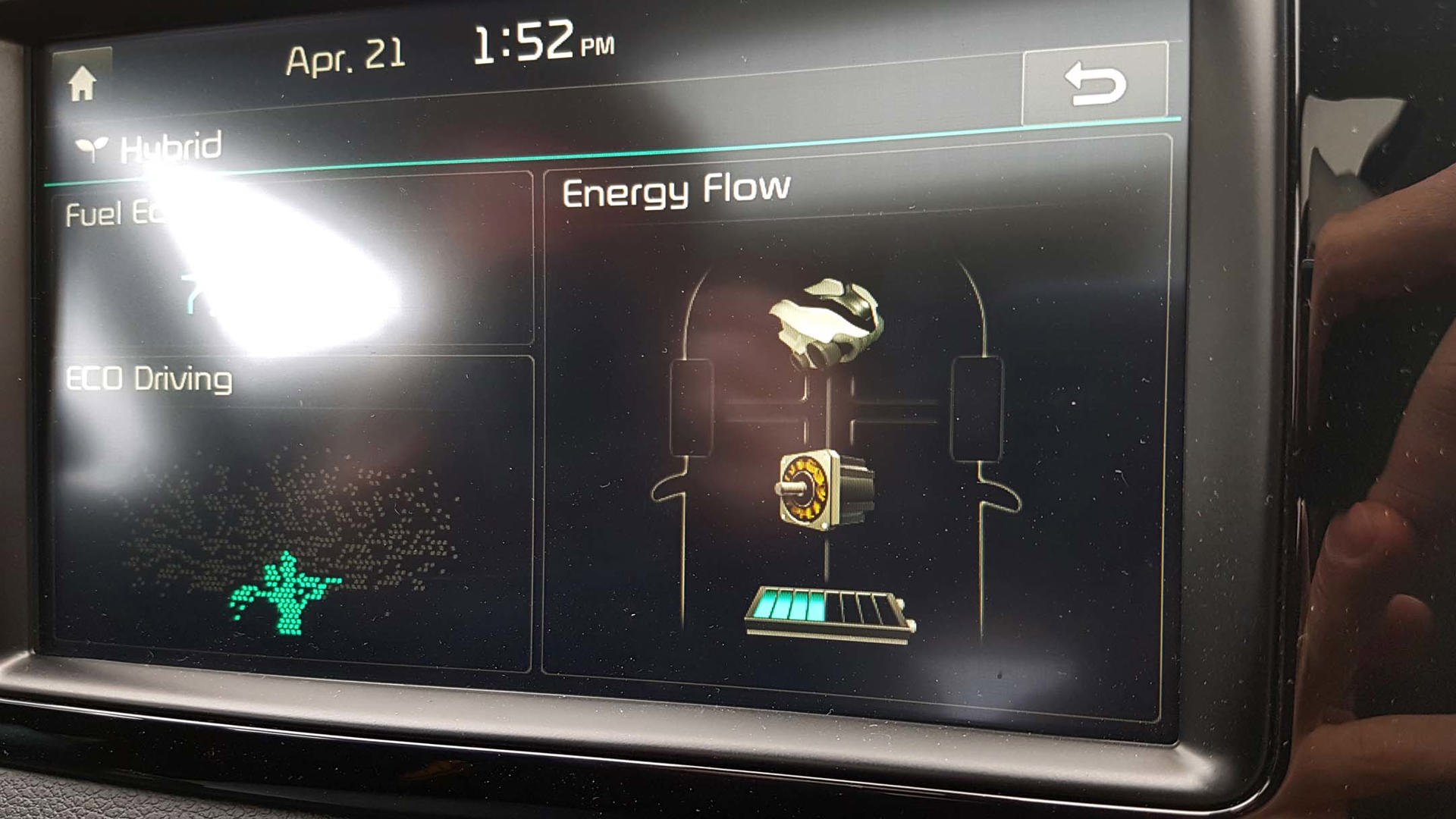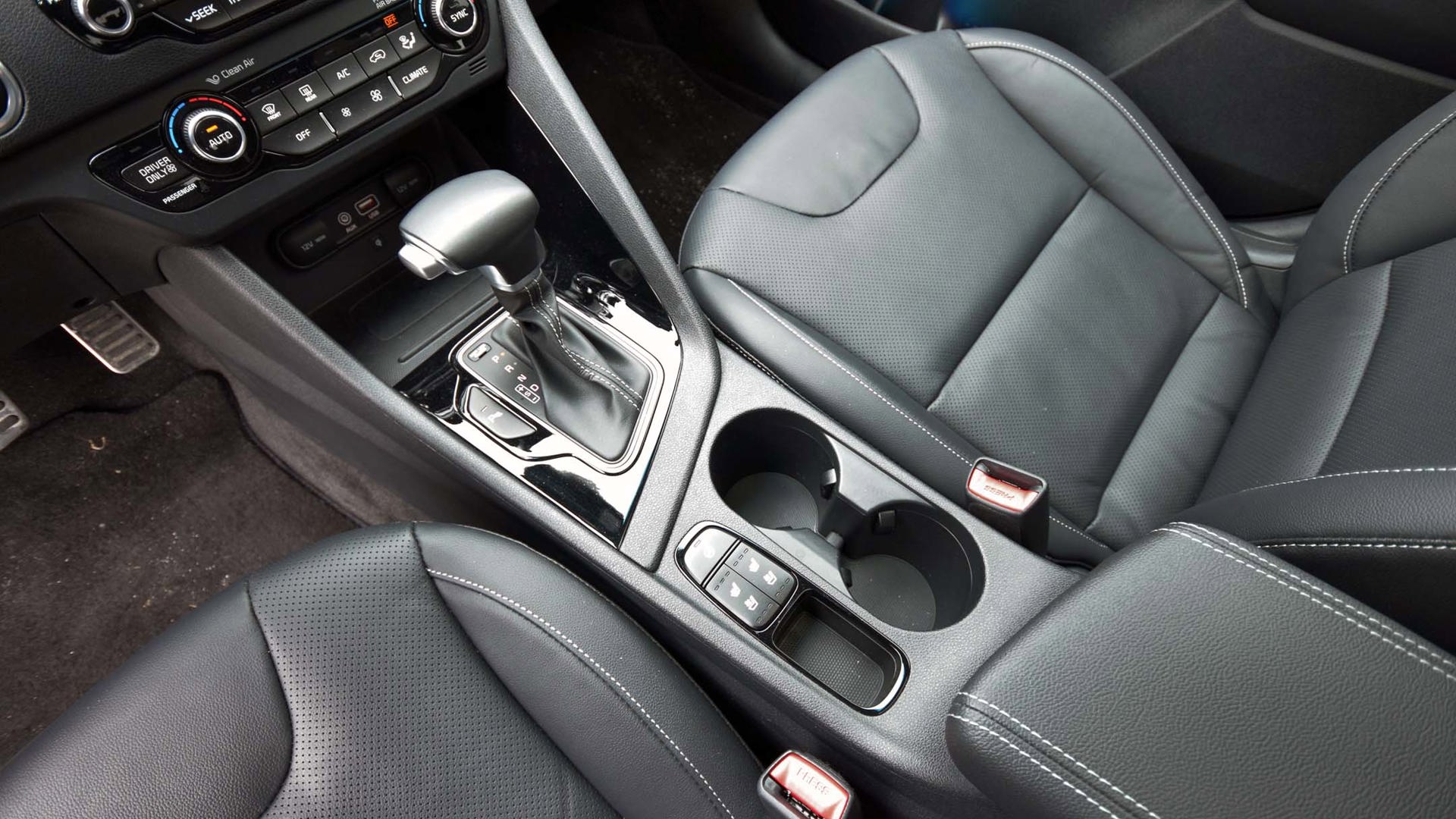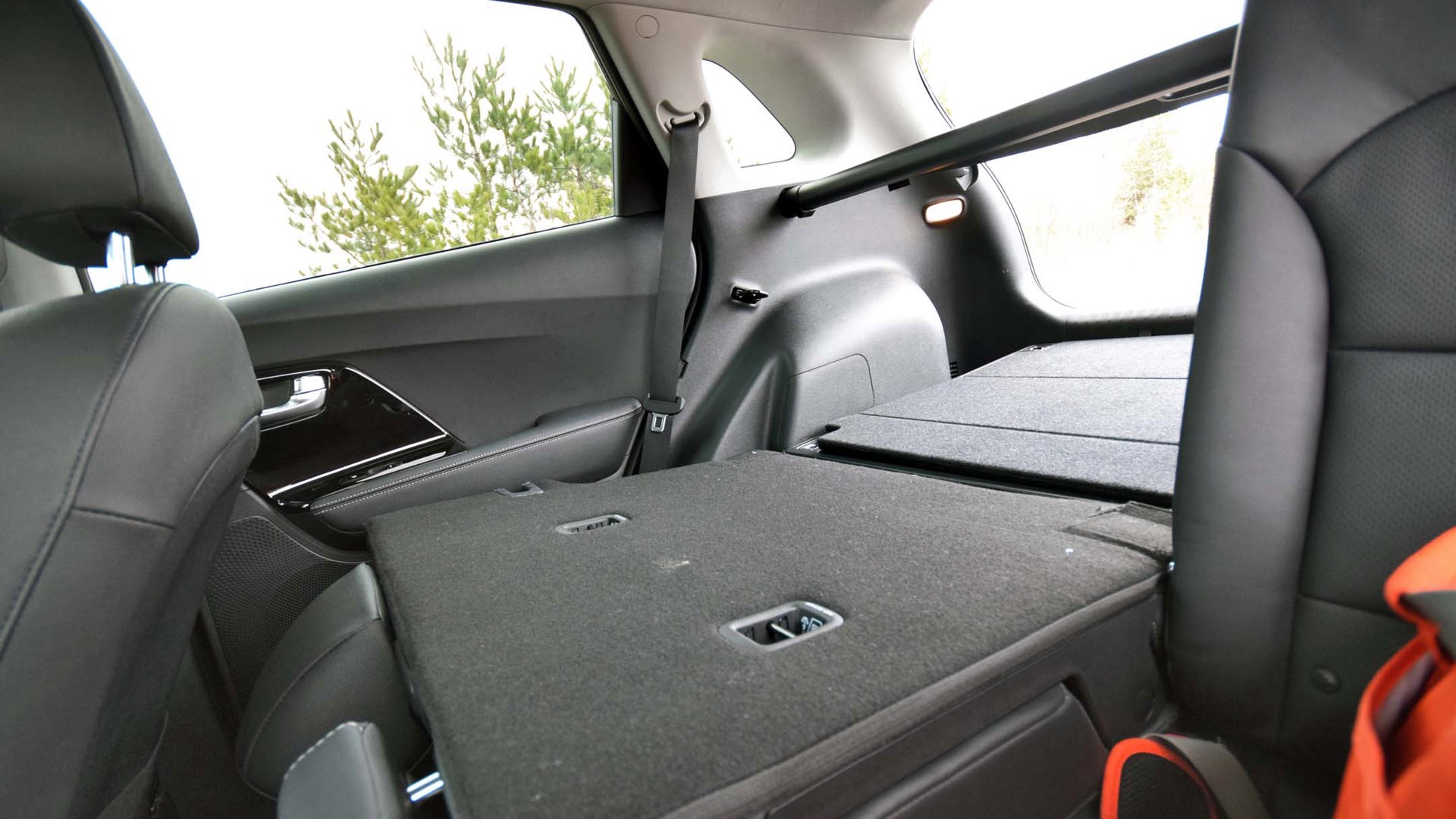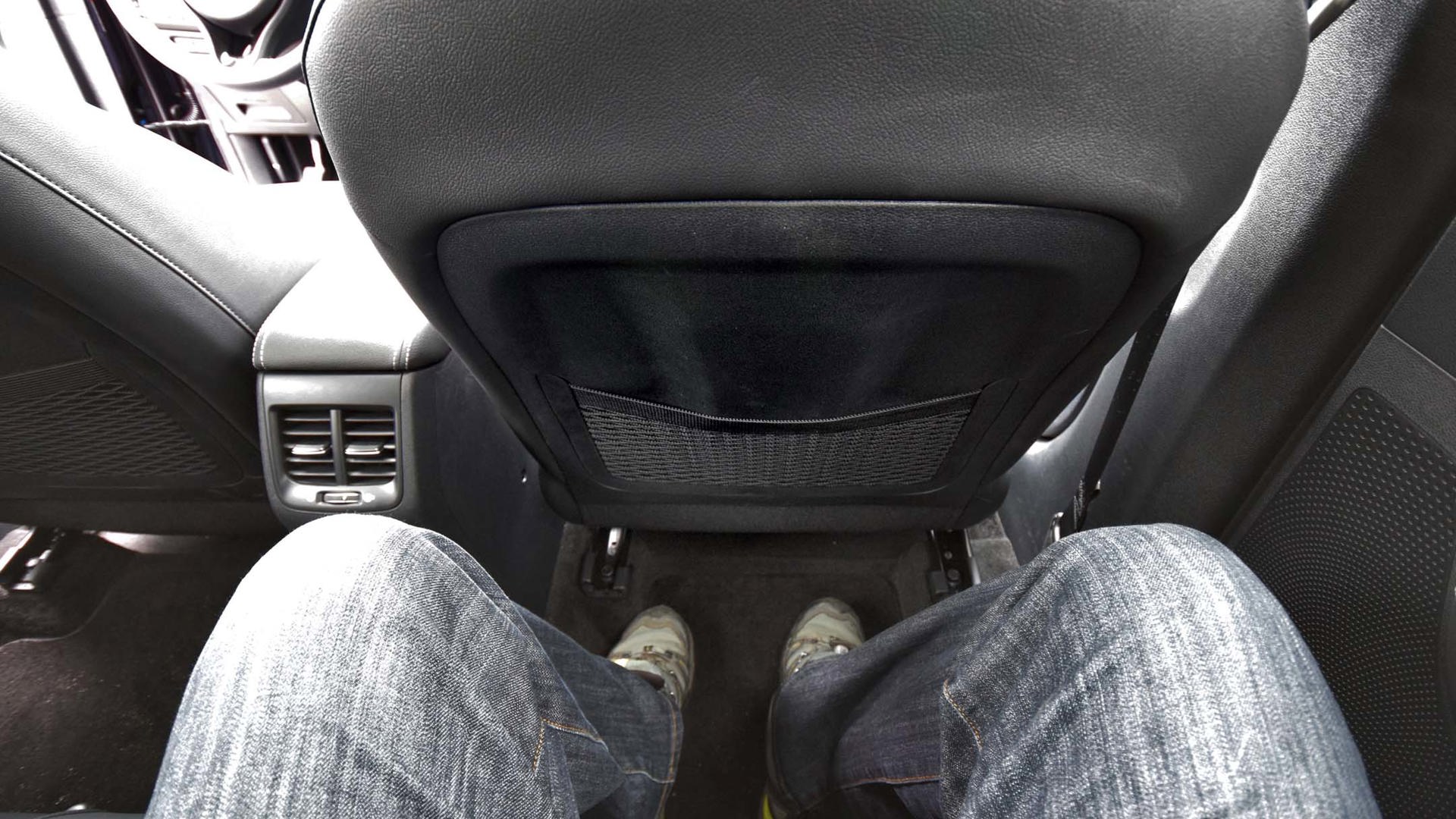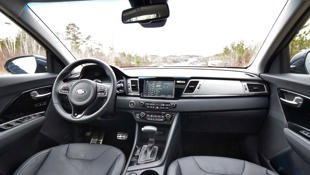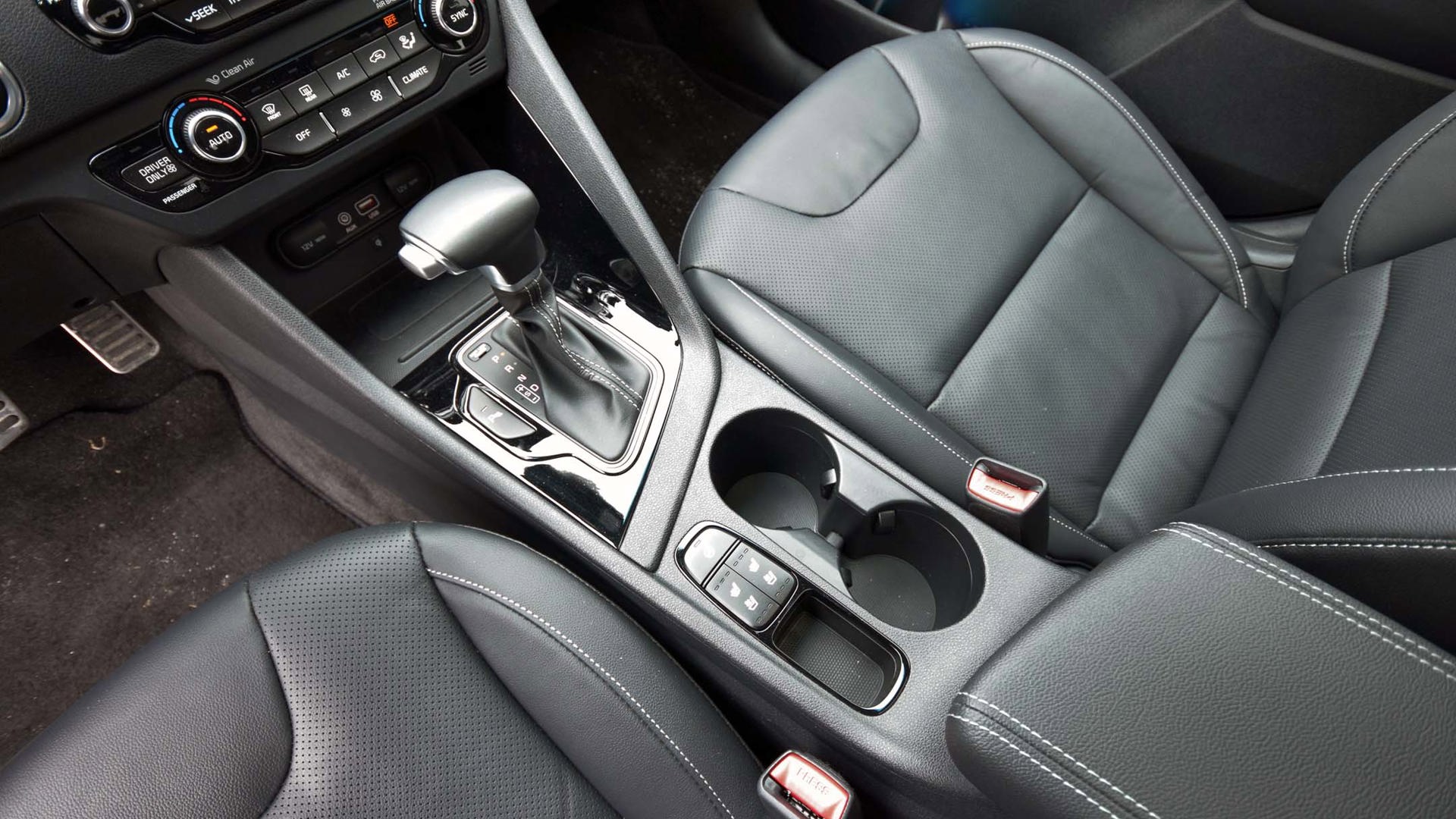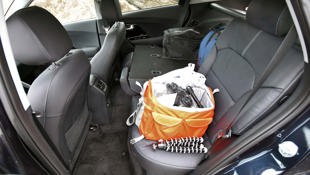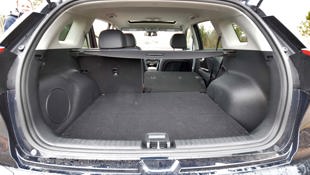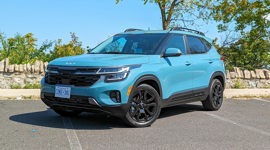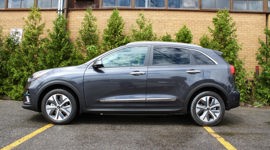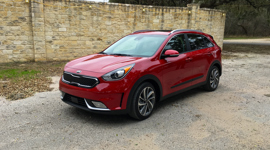 AutoTrader SCORE
AutoTrader SCORE
-
STYLING7/10
-
Safety8/10
-
PRACTICALITY9/10
-
USER-FRIENDLINESS8/10
-
FEATURES9/10
-
POWER7/10
-
COMFORT8/10
-
DRIVING FEEL8/10
-
FUEL ECONOMY7/10
-
VALUE8/10
Kia’s getting all up in Toyota’s face with a new model called the Niro: a dedicated hybrid crossover that gives Prius shoppers, and other atmospherically minded motorists, another worthy option in the hybrid marketplace.
If you fancy yourself a hybrid, but can’t digest the Prius’s looks, Niro may be what you’re after.
This venture puts the new and unproven Niro up against the world’s most popular hybrid, and one with the backing of over a million Toyota hybrids sold by the undisputed leader in hybrid cars.
You might say that, in some ways, the 2017 Kia Niro has its work cut out for it.
A little context, first.
The 2017 Toyota Prius is one of the most impressive vehicles I drove last year. It rides well, performs well, is comfortable and flexible, has great seats, is easy to maneuver, and feels solid and durable on rough roads. Add in the fantastic LED headlights that could do double duty in a thrice-the-price Cadillac, and the surprising off-the-line snap when poked, and you’ve got a mid-sized car that flaunts some of the best attributes on offer in mid-sized cars today. As a hybrid, it’s also silly-good on fuel. You could spend more feeding a budgie.
I left the Prius thinking it could convince an apprehensive driver to try their hand at hybrid ownership – largely because it doesn’t feel like a hybrid. I also figured that they’d probably sell even more of them if they didn’t look so out of this world.
And this is where the Niro shines. Mostly, it’s not looks that sell hybrid cars. But where the Prius is a mix of daring, futuristic, funky, and cyborg grasshopper, the Niro just looks like regular little crossover: normal, handsome, handy, flexible and sensible – albeit without AWD. It passes through crowds without a second glance, and some folks asked if it was the new Kia Rondo. If you fancy yourself a hybrid, but can’t digest the Prius’s looks, Niro may be what you’re after.
And, like the Prius, Niro requires little if anything from the driver in terms of compromise. Get in, get settled, fire it up, and drive: in the process, little gives away the fact that Niro is a hybrid at all.
There’s a decently sized and flexible cargo hold with all of the good stuff – including fully flat-folding rear seats, a shallow under-floor storage compartment, and small corner bins at the outer edges of the cargo area. The Niro’s battery lives beneath the rear seat, not behind it, so it doesn’t munch up a bunch of room. You’ll have no trouble fitting a weekend worth of camping gear for two, the family canine, or a $300 Costco run. As an added bonus, the hatch opens and closes with a nicely assisted action that’s solid and firm.
The cabin is normal, too. Typical Kia: upscale design, mostly the right materials in the right places, and it feels and looks a smidge richer than the price tag leads on. Everything inside is what you expect, and where you expect it, right down to the completely normal gear shifter that flies in the face of the Prius’s little electronic gear selector joystick.
Up front, look for lots of nearby at-hand storage and charging ports and covered compartments, which help occupants stay organized and powered up on the go. Headroom at all seats is more than adequate for average-sized adults, though rear seats can feel a bit cramped, laterally, for wider passengers.
Like the Prius, you’ve got to dig deep to feel or hear any sign of Niro’s hybrid powertrain as you drive around. Overall refinement goes to the Toyota – the powertrain is quieter and sounds more pleasing the odd time you can hear it, with blending and switching of electric and gasoline power handled a touch more smoothly and discreetly. Overall throttle response is a tick better in the Prius, too.
We’re talking minor differences, though. And in the Niro, if you’re not looking at the high-tech instrument readout that details the driveline’s real-time operation, or paying attention to the discreet coming and going of certain noises as the gas and electric systems kick in and out, you’d hardly notice anything different from driving anything else.
Power comes from a 1.6-litre GDI four-cylinder engine, teamed up with a 32 kilowatt electric motor, itself powered by the battery mounted beneath the rear seat, which is recharged by an electric motor–generator assembly attached to the engine. It all comes together inside of a six-speed dual-clutch transmission, and drivers get 139 horsepower, and nearly 200 lb-ft of torque.
That’s an advantage over the Prius in each spec, though Niro is the heavier car, and on my watch, used more fuel.
In its standard setting, Niro’s throttle is lazy and soft, making it easy to drive economically to save fuel – though all but the most laid-back drivers will find the standard throttle calibration to be numb and lazy. For an average to sportier driver, engaging Sport mode is recommended, since it makes the throttle feel more conventional and direct, and makes the Niro more eager to hustle up to speed. Driven spiritedly in Sport mode, Niro goes along nicely, isn’t too loud, and notably, the instant electric torque means there’s a delightful instantaneousness to your throttle inputs.
Note that both machines perform comparably to anything else in their size or pricing ballpark.
How’s she ride? The SX Touring grade tester’s up-sized wheels and thinner tires, combined with a fairly taut suspension, turned in a ride that landed on the stiffer side of comfortable. It feels a measure more responsive and sharp than the Prius, especially where steering is concerned, though test drivers are advised to visit the roughest road they can find to confirm acceptance of ride quality on harsher surfaces. If you like something that feels a little sportier, this will be just fine – though I did find the Prius to feel more refined and composed on rougher roads. Both machines are nicely suited for hours of highway cruising, and the Niro’s punchy up-level stereo is a worthy travel companion, too.
Most Niro variants boast mileage in the mid-4 L/100 km ballpark, similar to the Prius, though the tested Niro SX bumps consumption into the mid-5 L/100 km ballpark, thanks to its larger wheels and increased weight of feature content, among other factors.
In the Prius, I achieved the rated consumption figures on my test drive. With the Niro SX, I used 6.5 L/100 km, or a full 1.0 L/100 km more than advertised. The tester’s very low mileage and incomplete break-in may be partly to blame. To compare, a Nissan Versa Note or Honda Fit, driven in similar conditions and weather, used about 7.5 L/100 km.
Some final notes: as hybrids, neither Prius nor Niro has a great brake pedal feel, though the Niro’s emergency stopping performance is the more impressive of the pair. The pedal feels like it’s attached to a glob of semi-melted butter, but smash on it, and Niro bites in and shuts down from speed, hard and fast. It feels like it’s in a bigger hurry to get stationary than the Prius, and urgency from the braking system during emergency stop tests was impressive.
The Niro also boasts the better transmission of the pair – a six-speed dual -clutch unit that shifts gears and feels a measure more conventional and normal than the CVT unit fitted to the Prius. The Niro seems big on offering a completely normal driving experience, and the transmission helps.
The Niro’s central command interface is the better of the pair, too. It’s more modern looking, more logical, faster to respond, and features Apple CarPlay and Android Auto – two must-have smartphone integration platforms not offered by Toyota.
When it comes to headlights, the Prius takes the lead. Even Niro’s up-level xenon projectors failed to match the reach, brightness, colour quality, and saturation of the Prius’s excellent LED setup, which was one of the best lighting systems I’ve recently used on this side of $70,000.
Gripes? Keeping context in mind, few came to light. I wish Niro’s back-up camera offered higher resolution and a wider angle lens for a clearer, more thorough view of the Niro’s rearward surroundings, and some of the interior plastics seem easily scratched and scuffed.
Ultimately, consider Niro worthy of your attention if you’re after a dedicated hybrid that looks and functions, inside and out, like a regular little crossover. With space to spare, an upscale cabin, and the promise of great fuel efficiency without compromise, this one’s worthy of consideration for hybrid shoppers – apprehensive or otherwise.
| Engine Displacement | 1.6L + electric motor |
|---|---|
| Engine Cylinders | I4 |
| Peak Horsepower | 139 hp @ 5,700 rpm |
| Peak Torque | 195 lb-ft @ 4,000 rpm |
| Fuel Economy | 5.1/5.8/5.4 L/100 km cty/hwy/cmb |
| Cargo Space | 635 L / 1,789 L seats folded |
| Model Tested | 2017 Kia Niro SX Touring |
| Base Price | $32,995 |
| A/C Tax | $100 |
| Destination Fee | $0 |
| Price as Tested | $32,995 |
|
Optional Equipment
None
|
|
